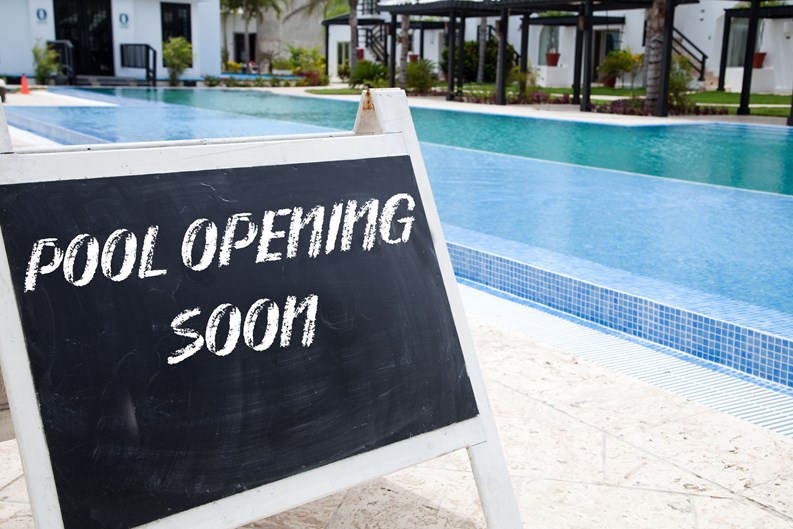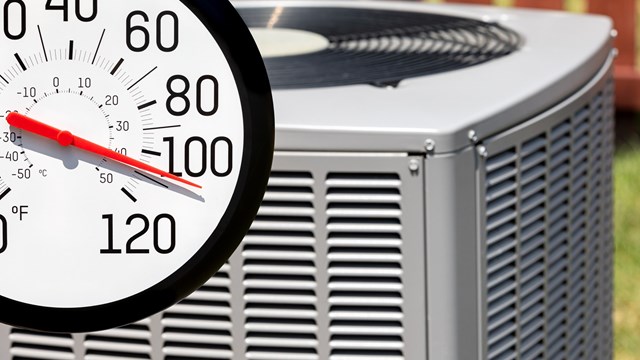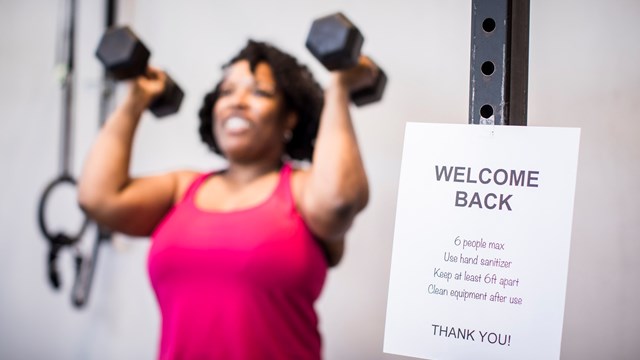When the water in the pool is icy cold, the standard advice is to hold your breath, close your eyes, and dive in. That is not how condominium association boards should approach the reopening of pools and other amenities closed during the pandemic, however. Sticking your toe in the water and adjusting gradually to the temperature is a much better idea.
Boards will face competing pressures—from owners who will be demanding access to closed amenities as state and local governments ease their lockdowns, as well as from owners who are aware that the virus will not disappear when lockdowns end, and who support continued efforts to reduce infection risks in the community.
There are potential liability risks on both sides. Owners who favor reopening may claim that the board is unfairly denying them the use of facilities for which they are paying, and may demand refunds of a portion of their common area fees; owners who contract the virus may claim the board was negligent in reopening the amenities.
We think the board’s defense would be equally strong against both suits. Insofar as owners demanding reopening are concerned, a board is not required to do what owners demand; it is required to use its best judgment to make decisions in the interests of the community and its residents. As for the potential demands for refunded fees, it still costs money to maintain the amenities, and if something cannot be used safely, it is within the board’s discretion to suspend the use. Therefore, owners denied access to closed amenities would be no more entitled to a refund than owners who chose voluntarily not to use them.
When it comes to owners who claim they contracted the virus from using amenities the board negligently failed to maintain, there are two arguments here. Firstly, it will be difficult at best for owners who contract the virus to identify with certainty where their exposure occurred. Secondly, the board is not required to guarantee that common areas are virus-free; it is only required to implement reasonable policies that reduce the contagion risks.
Insurance Coverage Unlikely
In considering the potential liability risks, boards should be aware that their insurance policies may not cover either their defense costs or any damages awarded to plaintiffs who prevail in court with an injury claim. Most commercial general liability policies specifically exclude coverage for communicable diseases; and directors’ and officers’ (D&O) liability policies exclude coverage for bodily injury claims. So while a resident who accuses the board of negligence in reopening amenities probably would not prevail, the board would probably have to pay the defense costs out-of-pocket.
On the other hand, because claims to reopen the amenities would not involve bodily injury, the D&O policy should cover the defense costs—although probably under a ‘reservation of rights,’ specifying that the insurer may choose not to cover the damages if the association loses the legal battle. Equally important, these plaintiffs probably would not be seeking monetary damages—and if they were, the damages would be minimal. As a result, the association’s potential financial exposure would be far greater from opening the amenities than from keeping them closed.
But liability isn’t the only consideration. For most boards, the question will not be whether to reopen amenities, but how to reopen them safely, in ways that minimize both the liability risks for the association and the health and safety risks of residents.
Follow Government Guidance
Generally speaking, boards will want to follow the guidance issued by federal, state, and local government agencies, just as most did when implementing decisions to close their amenities in mid-March. The protocols adopted by private gyms and health clubs will also provide some helpful insights; these businesses will be—or should be—as concerned about liability and safety as condominium associations.
Governmental guidance for reopening pools, gyms, and health clubs will most likely continue to be developed as more areas reopen. It is reasonable to expect that the guidance will focus on social distancing and sanitation. For gyms and health clubs, boards will probably want to (and may be required to) restrict the number of people who can be in the area at any given time, and perhaps the equipment they can use, so they can remain at least six feet apart.
Some boards are planning to use sign-up sheets—either paper or online—to regulate the flow of users in and out of the facilities. Roping off some equipment, so residents aren’t using adjacent machines, is another way of creating social distance between users. Having maintenance staff wipe down the equipment between sessions, requiring owners to do that, or both, are the primary options for reducing contagion risks. Boards may also want to require residents to wear masks while using the equipment.
Maintaining social distance in swimming pools will be more complicated. Depending on the pool’s size, limiting the number of people who can be in it may be necessary. One possibility is having owners sign up daily for swim time, or assigning swim days and times to all residents. Communities using access fobs may be able to program them accordingly. Limiting or barring guests will be another way to control the number of swimmers and ensure maximum access for residents.
Some communities are planning to remove poolside chairs and tables to discourage residents from congregating around the pool. How will you ensure that swimmers remain six feet apart? The old camp rule—stretch both arms out—is one way; requiring everyone to swim in lanes is another. Will you require swimmers to wear masks, or goggles?
Enforcement Challenges
Perhaps the most important question is how to enforce the rules the board enacts. You don’t want the lifeguards responsible for pool safety to also be enforcing compliance. Hiring separate monitors for the exercise rooms and pools may be necessary. However enforcement is structured, it will likely produce at least some degree of friction and ill-will—directed at hired monitors, the board, or at other owners. Reopening facilities under these enhanced health and safety protocols will involve additional costs as well. Staffing and sanitation requirements could increase association expenses by as much as 25 percent, according to some estimates.
Can your community afford those costs? Do you want the tensions, administrative burdens, and liability risks you will incur by reopening amenities? Is reopening amenities the right decision for your community? Can you do it safely? Should you do it at all? The questions are financial, legal, and operational—and the answers will be different for different communities, depending on their demographics, their facilities, and their budgets. Enforcing social distance requirements may be easier in larger spaces; a community with a large population but a small swimming pool area may be hard-pressed to create access restrictions that make sense, while health and liability risks may be greater in a community with a large number of older residents who are particularly vulnerable to infection.
Covering the Basics
Boards that reopen amenities will have to rethink, revise, and essentially re-engineer their usage protocols. We suggest the following:
1. Document your decision-making process. Have the minutes reflect the issues the board considered and the advice it followed.
2. Follow the guidance issued by government agencies.
3. Have your attorney review the reopening policies and procedures the board adopts to make sure they comply with official guidance. Your attorney should also review the policies periodically to ensure ongoing compliance. Guidance may be revised and updated as the pandemic experience continues to unfold.
4. Install signage in the amenities explaining the requirements for their use. This signage will be essential to retrain people in new habits. The signage should also note specifically that the association does not guarantee that the areas are free of COVID-19 contaminants, and that residents use the facilities at their own risk.
5. Remind owners periodically of the safety protocols governing the use of amenities and the importance of complying with them.
6. Consider requiring owners to sign a waiver agreeing not to sue the association should they contract the virus as a result of using the amenities. The enforceability of the waiver is subject to question, but it should provide at least some degree of protection for the association.
7. Enforce any rules the board adopts. Failure to do so will increase the association’s legal exposure.
8. Review your insurance policies to determine what coverage, if any, they provide for virus-related litigation and claims. Boards should consider obtaining broader coverage if possible, though it may not be.
9. Communicate with owners throughout the decision-making process. Don’t wait until the board has made a reopening decision. Explain the issues the board is considering, the concerns it is weighing, and the advice it is obtaining. You want to make it clear that the decision the board makes will not be made lightly. You also want to give owners some idea of what to expect. They need to understand that their post-pandemic use of the amenities will not look anything like their pre-pandemic use.
10. Expect pushback. Some owners won’t be happy with the board’s decisions or the policies it adopts—but the board isn’t required to make everyone happy. It is required to make a good faith effort and use its best judgment to do what is needed to protect the interests of the community and the health and safety of its residents.
Mark Einhorn is a partner at the Braintree, Massachusetts-based law firm of Marcus, Errico, Emmer & Brooks, and an integral part of the firm’s Transactional and Condominium Practice, advising associations and managers on governance issues, rules and lien enforcement, asset management, casualty loss claims, document amendments, land acquisition and development rights, election and transition procedures, contracts, and general liability issues.







Leave a Comment